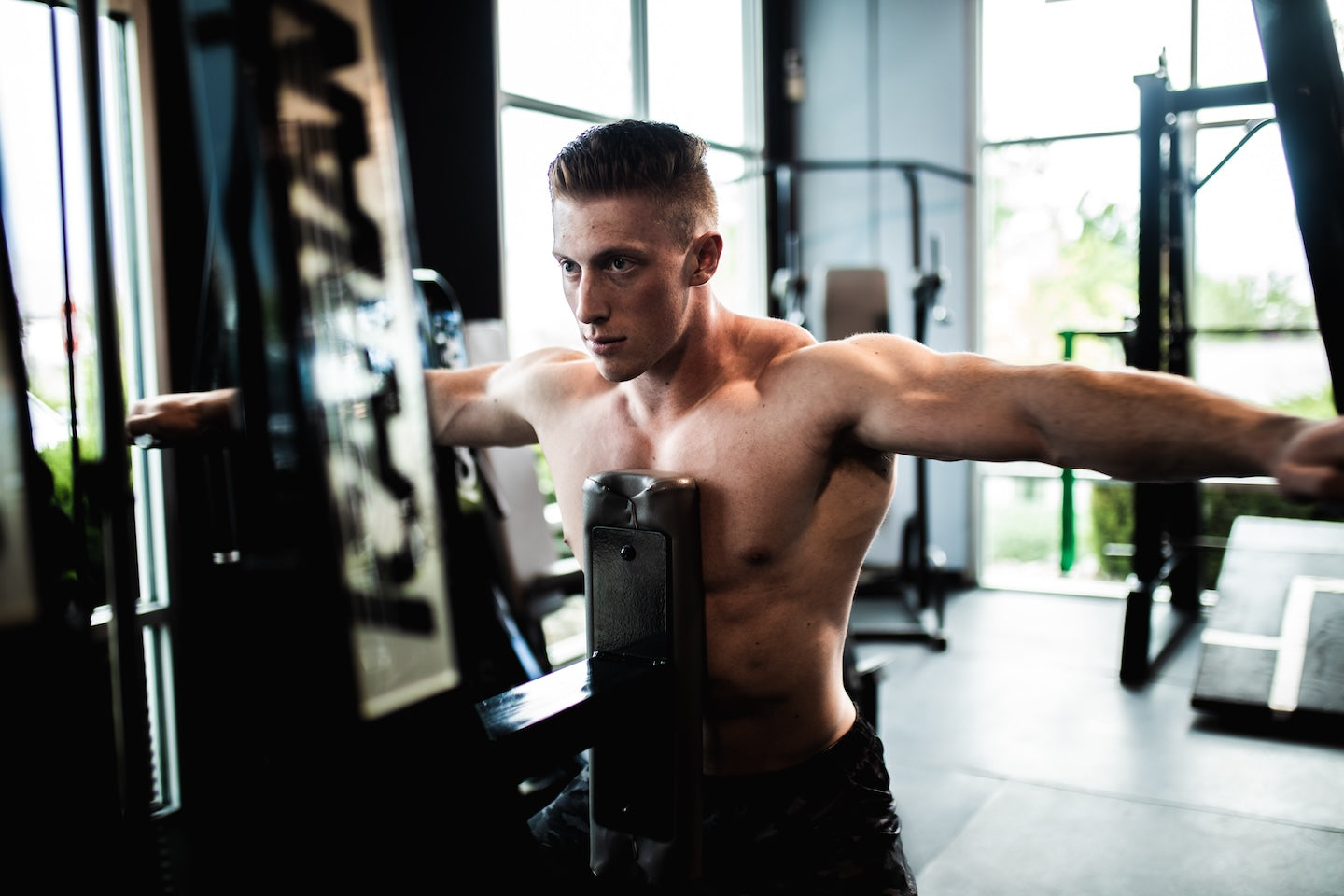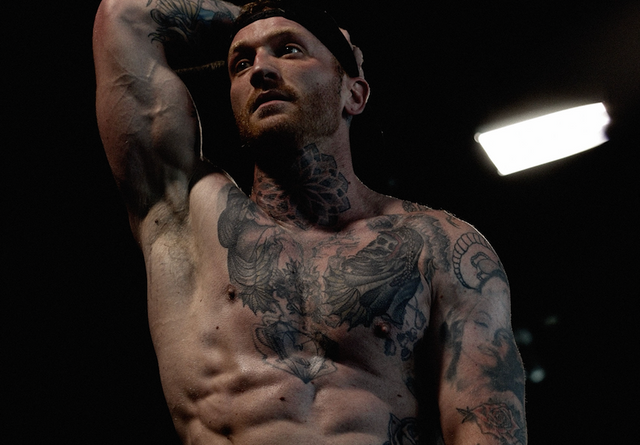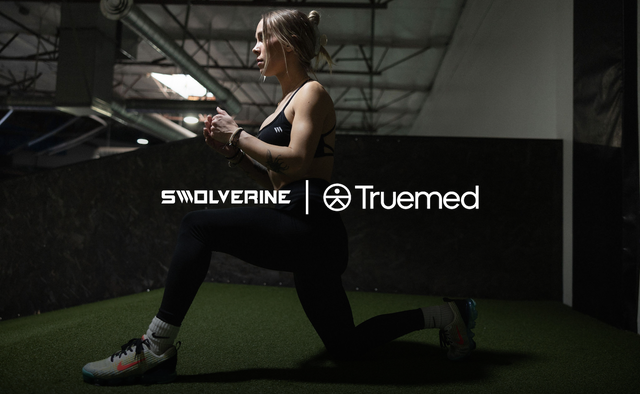Are you looking to take your shoulder strength and muscle gains to the next level? Look no further than the reverse dumbbell fly exercise. This powerful movement is a game-changer for targeting your deltoids and building massive shoulder strength. In this article, we'll take a deep dive into mastering the reverse dumbbell fly to help you achieve the strong, defined shoulders you've always wanted.
The reverse dumbbell fly primarily targets the rear deltoids, which are often a neglected area of the shoulder. By incorporating this exercise into your routine, you'll not only improve the aesthetics of your shoulders but also enhance your overall shoulder stability and functionality.
Whether you're a beginner or an experienced lifter, our step-by-step guide will walk you through proper form, common mistakes to avoid, and modifications to suit your fitness level. We'll also share tips on how to maximize your results and supercharge your shoulder gains with this highly effective exercise.
Get ready to take your shoulder strength to new heights with the reverse dumbbell fly. Let's dive in and unlock those gains!
What Is the Reverse Dumbbell Fly?
The reverse dumbbell fly, also known as the bent-over lateral raise, is a resistance exercise that primarily targets the posterior deltoids, rhomboids, and trapezius muscles. This exercise is performed by hinging at the hips and raising dumbbells out to the sides, mimicking the motion of a bird flapping its wings.
Unlike standard pressing or pulling exercises, the reverse dumbbell fly isolates the rear delts and upper back, which are often neglected in many traditional shoulder workouts.
“The reverse fly targets the rear deltoids, which are often underdeveloped compared to the front and side delts, helping to correct shoulder imbalances.” — Contreras et al., Journal of Strength and Conditioning Research
Benefits of the Rear Dumbbell Fly for Shoulder Strength
1. Balanced Aesthetic and Physique
The reverse dumbbell fly plays a crucial role in sculpting the shoulders. Strengthening the rear delts helps improve shoulder symmetry, contributing to a well-rounded shoulder appearance. When paired with exercises that target the front and side deltoids, the reverse fly helps achieve balanced shoulder development.
2. Shoulder Stability
The posterior deltoids are key to shoulder joint stability. By engaging these muscles, the reverse dumbbell fly enhances overall shoulder control and performance in other lifts, such as bench presses and overhead presses. This exercise also helps maintain proper posture, especially when performing pushing movements.
3. More Versatility
The reverse dumbbell fly is highly adaptable. You can perform it in various positions, including seated, bent over, or lying face down on an incline bench. This allows the exercise to be tailored to different body types and fitness levels, while still providing great results for shoulder strength and mobility.
Muscles Worked in the Rear Dumbbell Fly
| Muscle Group | Role in the Movement |
|---|---|
| Posterior Deltoid | Primary muscle responsible for shoulder abduction and external rotation |
| Rhomboids | Retract the scapula, improving shoulder stability |
| Trapezius (Upper & Middle) | Assist with scapular movement and control |
| Infraspinatus & Teres Minor | Rotator cuff muscles aiding in shoulder stabilization |
Strengthening these muscles with reverse dumbbell flies improves posture, shoulder balance, and upper body strength.
Proper Form and Technique for Performing the Rear Dumbbell Fly
How To Do Rear Dumbbell Fluys - Step-by-Step Instructions
-
Set Up Your Stance
-
Hold a dumbbell in each hand with palms facing inward (neutral grip).
-
Stand with feet hip-width apart, knees slightly bent, and hinge at the hips until your torso is nearly parallel to the ground.
-
-
Engage Your Core
-
Engage your core to stabilize your spine and avoid excessive arching of your back.
-
-
Perform the Fly Motion
-
With a slight bend in your elbows, raise the dumbbells out to the sides, keeping your arms at about a 45-degree angle.
-
Focus on leading with your elbows rather than your hands to ensure the rear delts are fully engaged.
-
-
Squeeze at the Top
-
At the top of the movement, squeeze your shoulder blades together to fully engage your rhomboids and trapezius muscles.
-
-
Lower Under Control
-
Slowly return the dumbbells to the starting position, maintaining tension in your shoulders.
-
-
Reps and Sets
-
Perform 3–4 sets of 12–15 reps with a light to moderate weight to ensure strict form.
-
Common Mistakes to Avoid When Doing the Rear Dumbbell Fly
| Mistake | Correction Tip |
|---|---|
| Using too heavy a weight | Start with light weights to master form; avoid swinging. |
| Elbows dropping below shoulder height | Keep elbows at shoulder level or slightly above. |
| Leaning too far forward | Maintain a neutral spine and engage your core throughout. |
| Jerking the weights | Perform the movement slowly and under control. |
Progression and Variations of the Rear Dumbbell Fly
Progression:
Start with light dumbbells to master the movement. Gradually increase the weight as you build strength. Progress by adding more sets or incorporating advanced variations.
Variations:
-
Incline Bench Reverse Fly – Lie face down on an incline bench to isolate the rear delts more effectively.
-
Standing One-Leg Reverse Fly – Perform the fly while balancing on one leg to challenge stability.
-
Resistance Band Reverse Fly – Use a resistance band for added tension throughout the range of motion.
How to Incorporate the Rear Dumbbell Fly into Your Shoulder Workout Routine
The reverse dumbbell fly is an excellent accessory exercise to target the rear delts and improve shoulder stability. Integrate it into your shoulder workouts in the following ways:
Post Compound Movements
After performing overhead presses or bench presses, use the reverse dumbbell fly to isolate the rear delts and balance out shoulder development.
SuperSet or Finisher
Pair the reverse dumbbell fly with lateral raises or face pulls for a well-rounded shoulder workout. Perform them back-to-back for 3–4 sets of 10–12 reps each.
Frequency
Aim to incorporate reverse dumbbell flies 2–3 times per week to target the rear deltoids effectively without overtraining.
Tips for Maximizing Deltoid Gains with the Rear Dumbbell Fly
-
Mind-Muscle Connection
Focus on the rear delts throughout the entire range of motion. Feel the contraction and avoid using momentum. -
Supersets and Drop Sets
Combine reverse dumbbell flies with other rear deltoid exercises like face pulls or band pull-aparts to maximize muscle activation. -
Adjust Angles
Change the angle by using an incline bench or performing standing variations to target different parts of the rear delts. -
Form Over Weight
Always prioritize proper form over heavier weights to prevent injury and ensure effective muscle recruitment.
Safety Precautions for Beginners and Those with Shoulder Injuries
For beginners, start with light weights and focus on mastering form before progressing to heavier dumbbells. It's important to warm up properly and engage in dynamic stretches to enhance mobility and flexibility in the shoulder joints.
If you have pre-existing shoulder injuries, consult a healthcare provider or physiotherapist before attempting this exercise. In some cases, using resistance bands or light weights can provide the same benefits without stressing the shoulder joint.
Sample Shoulder Workout Routine Including the Rear Dumbbell Fly
| Exercise | Sets | Reps |
|---|---|---|
| Overhead Dumbbell Press | 4 | 8–12 |
| Lateral Raises | 3 | 10–15 |
| Reverse Dumbbell Fly | 3 | 12–15 |
| Face Pulls (or Band Pull-Aparts) | 3 | 12–15 |
This shoulder routine balances strength and hypertrophy and integrates the reverse dumbbell fly to ensure comprehensive development of all three deltoid heads.
Mastering the Rear Dumbbell Fly for Shoulder Health and Strength
The reverse dumbbell fly is an essential movement for building strong, well-defined shoulders. By targeting the posterior deltoids, it not only enhances shoulder aesthetics but also improves stability, posture, and functional strength. Integrating this exercise into your shoulder routine will help prevent muscle imbalances, increase shoulder mobility, and ensure a balanced physique.
By focusing on form, progressive overload, and mind-muscle connection, you can maximize the benefits of this exercise and develop powerful, sculpted shoulders that enhance both strength and function.
Achieve Massive Delts With Rear Dumbbell Fly
Incorporating the reverse dumbbell fly into your shoulder training routine is a powerful way to enhance your shoulder strength and aesthetics. By specifically targeting the rear deltoids, this exercise plays a crucial role in achieving balanced and well-defined shoulders. With its numerous benefits, including improved stability and functionality, the reverse dumbbell fly should be a staple in any serious lifter's regimen.
By adhering to proper form, avoiding common mistakes, and exploring variations and progressions, you can maximize the effectiveness of this exercise. Remember to integrate the reverse dumbbell fly thoughtfully within a well-rounded shoulder workout routine, emphasizing the importance of overall shoulder development. With dedication, consistency, and the right strategies, you can supercharge your shoulder gains and achieve the strong, defined shoulders you've always desired.
As you embark on this journey to mastering the reverse dumbbell fly, keep in mind the importance of listening to your body and making adjustments as needed. With patience and perseverance, you’ll unlock the full potential of your shoulder strength and muscle gains. Start today, and watch your deltoids transform into the powerful, sculpted shoulders you’ve been working toward.







